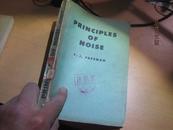
SAFETY PRINCIPLE
全新正版 极速发货
¥ 29.79 6.2折 ¥ 48 全新
库存2件
作者赵焕娟,金龙哲,汪澍,黄志安,高玉坤
出版社冶金工业出版社
ISBN9787502494063
出版时间2023-03
装帧平装
开本其他
定价48元
货号1202890310
上书时间2024-09-05
- 最新上架
商品详情
- 品相描述:全新
- 商品描述
-
目录
Contents1Overview of Safety Science11.1The concept and characteristics of safety11.1.1The emergence of safety problems and their cognition process11.1.2Concepts and attributes of safety11.1.3Basic features of safety21.2The emergence and development of Safety Science41.2.1The birth of Safety Science41.2.2The development and current situation of foreign Safety Science41.2.3The development and current situation of domestic Safety Science61.2.4Discipline construction71.3The definition and discipline system of Safety Science91.3.1Definition of Safety Science91.3.2The research content and object of Safety Science101.3.3The discipline system of Safety Science and relationship with other disciplines141.4The basic terminology of Safety Science182Basic Knowledge of Safety Science192.1The philosophical basis of Safety Science192.1.1The unity and contradiction between safety and danger192.1.2The connection view and system view of Safety Science192.1.3Qualitative change and quantitative change in safety202.1.4The inevitability and contingency of safety accident202.1.5Safety issues of simplicity and complexity,accuracy and fuzziness202.1.6Safety philosophy212.2The theoretical basis of Safety Science222.2.1Safety system theory222.2.2Safety information theory222.2.3Safetycontrol theory232.2.4Safety psychology and behavior232.2.5Safety management232.2.6Safety economics242.2.7Safety risk science252.2.8Safe ergonomics252.2.9Safety culture and enterprise safety culture252.3The mathematical basis of Safety Science262.3.1Basic logical operations and logical functions262.3.2Random events and probability calculations282.3.3Reliability and probability calculation of basic events292.3.4Several basic concepts commonly used in Safety Science313Theory of Rheology and Mutation323.1Background knowledge of rheologymutation theory323.1.1Rheologymutation theory of matter323.1.2The time and space view of rheologymutation theory323.1.3The motion view of rheologymutation theory323.2Basic characteristics of safety rheologymutation323.2.1Mine disaster323.2.2Mechanical accident333.2.3Social change or reform333.2.4Human life process333.2.5Safety rheologymutation theory343.3The basic theory of safety rheologymutation343.3.1Rheologymutation basic concept in Safety Science343.3.2Rheologymutation theoretical model in Safety Science363.3.3Modern rheologymutation theoretical model application in Safety Science384Summary of the Accident394.1Definition and characteristics of accidents394.1.1Definition of accident394.1.2The main influencing factors of the accident404.1.3Characteristics of the accident 414.2Accidents classification424.2.1Classification of injury degree454.2.2Classification of injury454.2.3Classification of accident severity464.2.4Other categories of accidents474.3Accident statistics474.3.1Contents of accident statistics474.3.2Accident situation484.3.3Personnel situation484.3.4Situation of coal mining enterprises484.3.5Production safety accident reporting system494.3.6Calculation of economic loss of casualty accidents504.3.7Basic methods of accident statisticsstatistical overview514.3.8Comprehensive index method514.4Accident investigation and handling524.4.1Incident reporting524.4.2Accident investigation535Accident Causation Theory and Model605.1The emergence and development of accident cause theory605.2Accident proneness605.2.1Overview of accident proneness605.2.2Accident liability625.3Accident causal chain theory635.3.1Causal inheritance635.3.2Types of accident causal645.3.3The causal and harmful object645.3.4Heinrich accident causality theory665.3.5Bode accident causality theory675.3.6Edward Adams accident causality theory685.3.7Toruzo Kitagawa causal chain theory685.3.8The Theory of causes of accidents after World War Ⅱ695.4Epidemiological methods used in accidents695.5Accidental energy release theory 705.5.1Overview 705.5.2Principles and measures to prevent accidental release of energy 725.5.3Accident causal chain model based on energy viewpoint735.5.4Two types of hazard theory based on energy viewpoint745.6The main cause of human error775.6.1Wigglesworch accident model 785.6.2J.Surry accident model diagram785.6.3Lawrence model 815.6.4Anderson model825.6.5Haier model845.7The origin of disturbance855.7.1Disturbance origin accident model855.7.2Multilinearity and application of accident event process 865.8Dynamic change theory885.9Trajectory intersection theory915.9.1The position of people and things in the cause of the accident915.9.2Trajectory intersection theory and accident cause model935.10Synthesis965.11Modern domestic scholars and theories975.11.1Bird theory975.11.2Accidental release of energy theory985.11.3Safety system theory1005.11.4Trace intersecting theory1015.11.5Kitagawa Chusan accident causal chain theory1035.11.624Model1046Safety Evaluation Model and Method1076.1Job risk analysis(LEC)1086.2Main job evaluation methods1116.2.1Classification of occupational exposure to toxic substances1116.2.2Method of grading and evaluating the hazard degree of toxic operation1116.2.3Method of hazard level classification of productive dust operations1116.2.4Method of hazard degree classification of noise operation1126.2.5The hazard degree grading evaluation method for high or low temperature operation1136.2.6Safety evaluation methods of chemical enterprises1136.3Explosion accident and consequence evaluation1136.3.1Overview1136.3.2The energy of physical explosion1146.3.3Shock wave and injurydestructive effect1176.3.4Various VCE computing models1216.4Scope(or damage)evaluation method1256.4.1Leak1256.4.2Diffusion1306.4.3Fire1356.5Evaluation method for flammable,explosive and toxic major hazards 1416.5.1Overview1416.5.2Evaluation method1426.6Modern safety management methods1506.6.1PDCA cycle1506.6.2OHSMS1526.6.3HSE management system1537Risk Factors and Identification Methods1917.1Definition of hazardous and harmful factors1917.2Classification of hazardous and harmful factors191References194
相关推荐
-

Prin
全新保定
¥ 20.70
-

vindecare prin autotratament
九品长沙
¥ 15.00
-

PRIN CESS VOLUME II
八五品北京
¥ 25.00
-

张国荣 prin temps 磁带
九五品汕头
¥ 59.00
-

THE 80/20PRIN CIPLE
九品连云港
¥ 9.00
-

6818PRIN CIPLES OF NOISE
八五品北京
¥ 44.00
-

PRIN FOT PREMIS INTERNACIONALS DE FOTOGRAFIA
八五品北京
¥ 300.00
-

prin tm aking+MIXED NED
八五品广州
¥ 68.00
-

?Mon village Serzy et Prin.?
九品沈阳
¥ 960.00
-

SAFETY PRINCIPLE
全新广州
¥ 29.87
— 没有更多了 —













以下为对购买帮助不大的评价